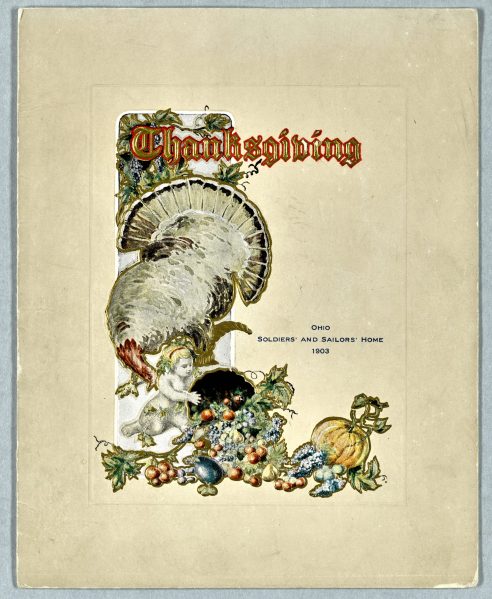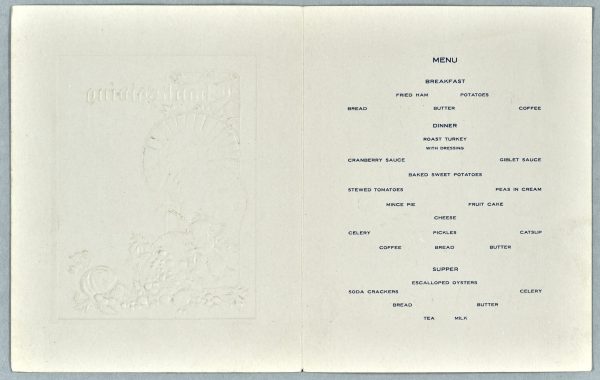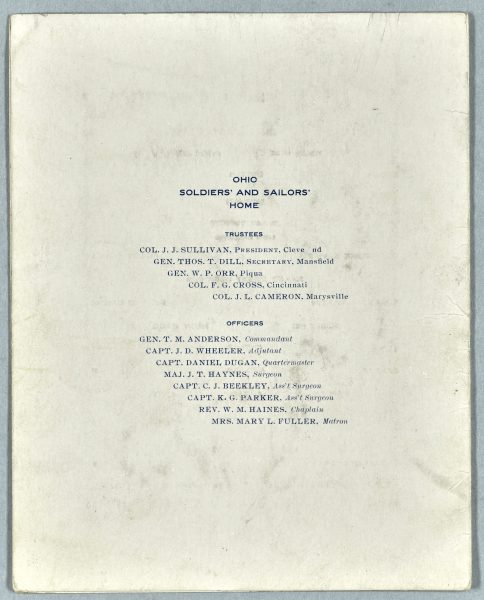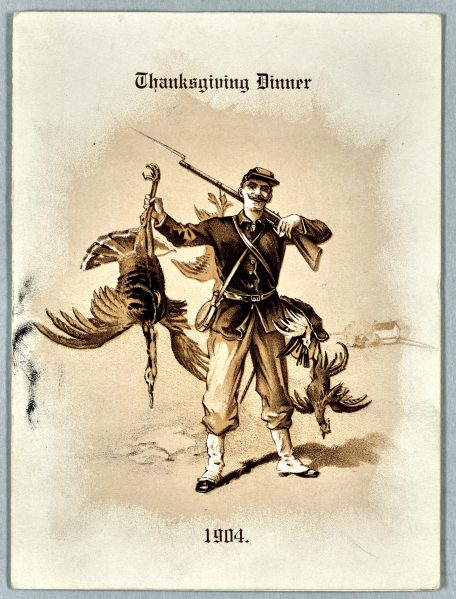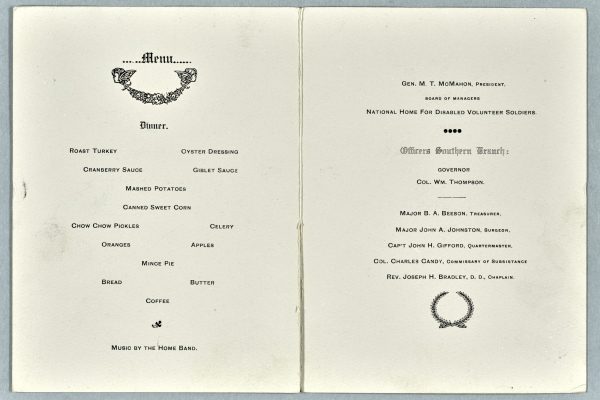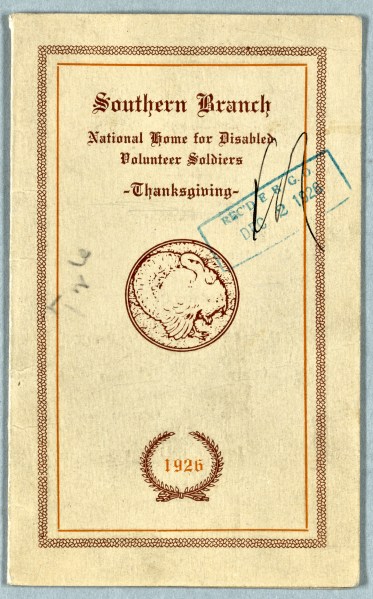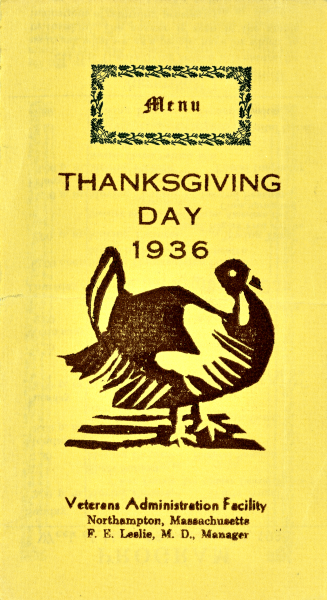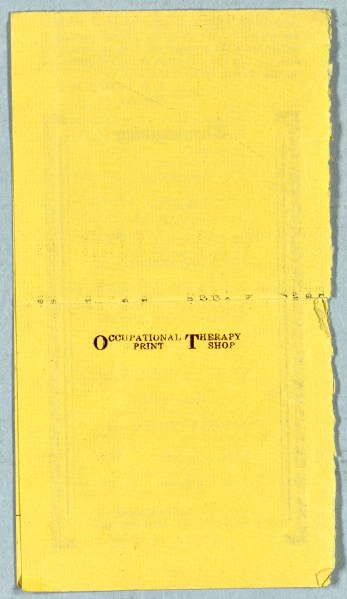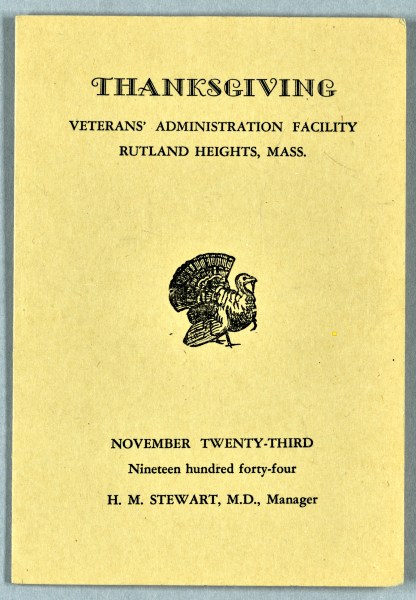In 2021, National VA History Center Archives staff wrote a little article about Thanksgiving dinner and how the meals hadn’t changed much between 1930 and 1970. At that point, we were just about six months into our collecting efforts and only had the two to compare. We are now two years into our collecting and have more to look at. The meals themselves still have consistent themes but that artwork on the covers and the small details inside are interesting. In doing the research, I learnt that these are technically not menus. Menus traditionally offer up the selection of food available, while bills of fare declare what is being served. This is reflected in J.C. Gobrecht’s book History of the National Home for Disabled Volunteer Soldiers in his description of holiday dinners.
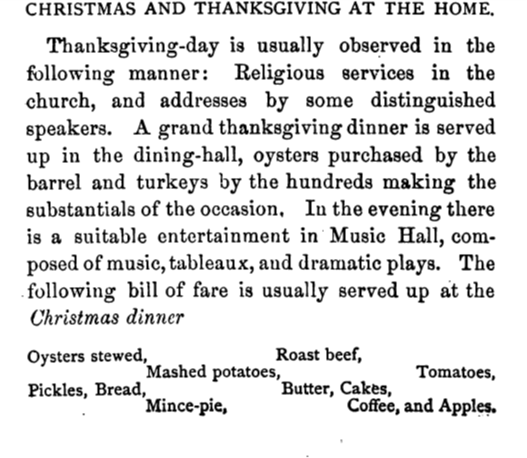
Written in 1875 by a Veteran of the Home, it is about the most complete contemporaneous source we have on the earliest days, and we rely on it pretty frequently. Bills of fare it is.
In retired Veterans Health Administration historian Darlene Richardson’s collection, we have about 40 holiday bills of fare ranging from 1889 to about 1960. Some of them are from the various National Homes, and others are from state homes such as this one from the Ohio Soldiers’ and Sailors’ Home in Sandusky.
Not only is it complete with gold-colored paint, but when one looks inside, coffee and cigars are available for after-dinner. The cigars and Baldwin apples were sponsored items, which isn’t seen in any of the others.
This one from 1904 is interesting in the small details. On the front cover is a soldier that appears happy to have caught his dinner and is very proud of his mustache. The middle of the card shows the dinner offering as well as a list of senior staff. I did google chow chow pickles and it’s quite an easy recipe. The goal was to make sure that nothing went to waste so it’s adaptable and might be worth holding onto for canning season. The back of the card is that same soldier with a note underneath “The Advance of the Calvary Skirmish Line.” That’s one way to get out of doing the dishes.
It appears that in 1926 something went seriously awry between the printing and the actual cooking. That’s not judgement – we have all had meals go totally sideways. There is a fun story as to why my family had pepperoni pizza every year for Christmas Eve for about 12 years.
A number of the bills of fare were printed commercially, but others were printed in the occupational therapy print shops. In this next case, it’s from the VA facility in Northampton, Massachusetts, in 1936. Rather than going across like the others, they opted to go vertically as the movie schedule for the week was also printed. According to the Internet Movie Database, the facility was doing quite a decent job of keeping up with new releases.
Finally, we have an interesting one. For this menu in 1944, there are a significant developments. There is a heavy emphasis on fruits and vegetables, and also the name of the Chief Dietician, Gwendolyn E. Phipps, is in the card. The history of dietetics is tied directly to wartime consumption. The American Dietetics Association was founded in 1917 for the express purpose of helping the government conserve food and improve public health. By World War II, there were 1,580 dieticians serving, including three that were Prisoners of War in the Philippines. Several other cards list the chef or the matron, but so far this is the only one with the dietician.
We at the National VA History Center wish everyone a safe and joyful Thanksgiving!
By Robyn Rodgers
Senior Archivist, National VA History Center
Share this story
Related Stories

Curator Corner
The Story Behind the National Homes’ Seal
The National Home for Disabled Volunteer Soldiers turns 160 years old in 2025. The campuses are the oldest in the VA system, providing healthcare to Veterans to this day.
At the time of their establishment, they were the first of their type on this scale in the world. Within the NHDVS seal is the story that goes back 160 years ago.
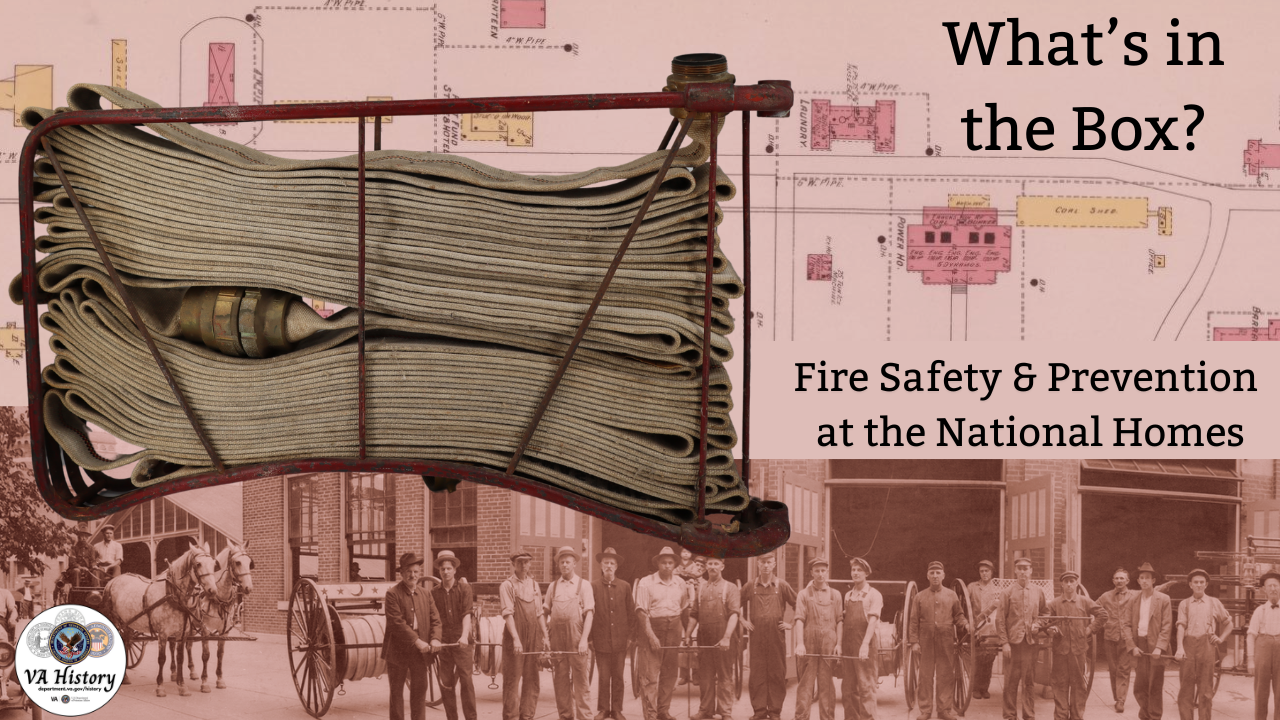
Curator Corner
What’s in the Box? Fire Safety and Prevention at the National Homes
Fire safety may not be the first thing that comes to mind when thinking about Veteran care, but during the National Home for Disabled Volunteer Soldiers period (1865-1930), it was a critical concern. With campuses largely constructed of wooden-frame buildings, housing thousands of often elderly and disabled Veterans, the risk of fire was ever-present. Leaders of the National Homes were keenly aware of this danger, as reflected in their efforts to establish early fire safety protocols.
Throughout the late 19th century, the National Homes developed fire departments that were often staffed by Veteran residents, and the Central Branch in Dayton even had a steam fire engine. Maps from this era, produced by the Sanborn Map Company for fire insurance purposes, reveal detailed records of fire prevention equipment and strategies used at the Homes. These records provide us with a rare glimpse into evolving fire safety measures in the late 19th and early 20th Century, all part of a collective effort to ensure the well-being of the many Veterans living there.


